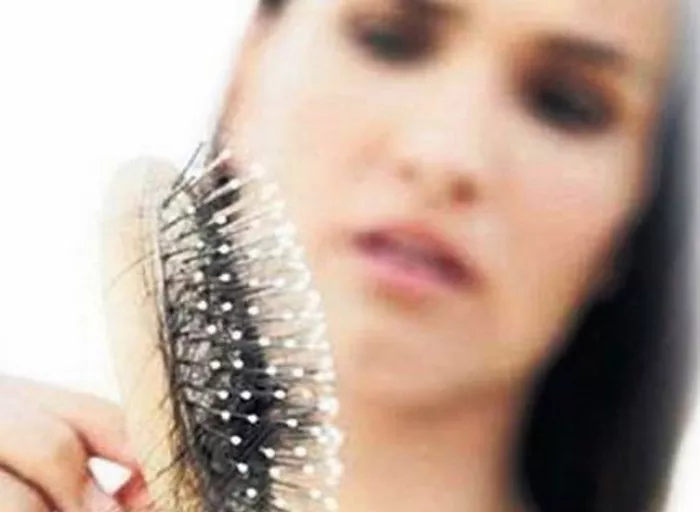Dealing with the discomfort and visibility of seborrheic dermatitis can be challenging, and concerns about potential hair regrowth often add to the distress. This common skin condition affects the scalp and can lead to redness, inflammation, and flaking. However, understanding the dynamics of seborrheic dermatitis and its impact on hair follicles is crucial for individuals seeking reassurance about regaining a full, healthy head of hair.
Understanding Seborrheic Dermatitis: A Brief Overview
Seborrheic dermatitis is a chronic inflammatory skin condition that primarily affects areas with a high density of oil glands, such as the scalp, face, and chest. It is often characterized by red, itchy skin and flaky scales, resembling dandruff. While it doesn’t directly cause hair loss, the inflammation and associated symptoms may lead to concerns about the health and regrowth of hair.
The Impact on Hair Follicles: Does Seborrheic Dermatitis Cause Permanent Damage?
The good news is that seborrheic dermatitis typically does not cause permanent damage to hair follicles. Hair loss associated with this condition is often a result of the inflammation and irritation rather than irreversible damage to the follicles themselves. Once the dermatitis is effectively treated, hair follicles can recover, and regrowth can occur.
Effective Treatment: The Key to Encouraging Hair Regrowth
Achieving hair regrowth after seborrheic dermatitis is closely tied to effectively managing the condition. Here are some key steps to consider:
Anti-fungal and Anti-inflammatory Treatments: Since seborrheic dermatitis is often linked to the presence of a yeast called Malassezia on the skin, anti-fungal treatments can be highly effective. Medicated shampoos containing ingredients like ketoconazole, selenium sulfide, or zinc pyrithione can help control the yeast and reduce inflammation.
Topical Steroids: In cases of more severe inflammation, dermatologists may prescribe topical steroids to alleviate symptoms. It’s crucial to use these under medical supervision, as prolonged use of strong steroids can have side effects.
Regular Cleansing: Keeping the scalp clean is essential in managing seborrheic dermatitis. Regular and gentle cleansing with a medicated shampoo can prevent the buildup of scales and control inflammation.
Avoiding Triggers: Identifying and avoiding triggers that worsen seborrheic dermatitis is crucial. These triggers may include stress, certain skincare products, or environmental factors. Understanding and managing these triggers can contribute to long-term relief.
The Healing Process: Patience is Key
While effective treatment is the cornerstone of encouraging hair regrowth, it’s important to approach the process with patience. Hair growth is a slow and cyclical process, and regrowth may take time even after successful management of seborrheic dermatitis. Understanding the natural hair growth cycle is essential:
Anagen Phase (Growth): Hair actively grows during this phase, which typically lasts several years.
Catagen Phase (Transition): Hair follicles transition to a resting state in this short phase, lasting a few weeks.
Telogen Phase (Resting/Shedding): Hair follicles rest during this phase, and old hairs are shed to make way for new growth.
Effective treatment addresses seborrheic dermatitis, creating a favorable environment for hair follicles to enter the anagen phase and initiate regrowth. However, it’s essential to recognize that this process may take several months, and visible results may not be immediate.
Maintaining Scalp Health: A Long-Term Approach
To support ongoing hair health and prevent a recurrence of seborrheic dermatitis, adopting a long-term approach is crucial. Consider the following strategies:
Regular Maintenance: Even after symptoms subside, continue using medicated shampoos or treatments as recommended by your dermatologist to prevent a recurrence.
Gentle Hair Care Practices: Be mindful of your hair care practices. Avoid excessive heat styling, tight hairstyles, and harsh chemical treatments that can stress the hair and scalp.
Balanced Diet: A balanced diet rich in vitamins and minerals is essential for overall health, including the health of your hair and scalp.
Regular Check-ups: Schedule regular check-ups with your dermatologist to monitor your scalp health and address any emerging concerns promptly.
See Also: What Medications Make You Lose Your Hair: All You Need To Know
Conclusion: Hope on the Horizon
While dealing with seborrheic dermatitis can be challenging, understanding that hair regrowth is possible with effective treatment and patience provides hope for many individuals. By addressing the underlying causes of the condition and adopting long-term scalp care practices, individuals can look forward to healthier, fuller hair over time. Consulting with a dermatologist for personalized guidance and treatment options is a crucial step in navigating the journey towards regaining confidence in one’s hair health.


